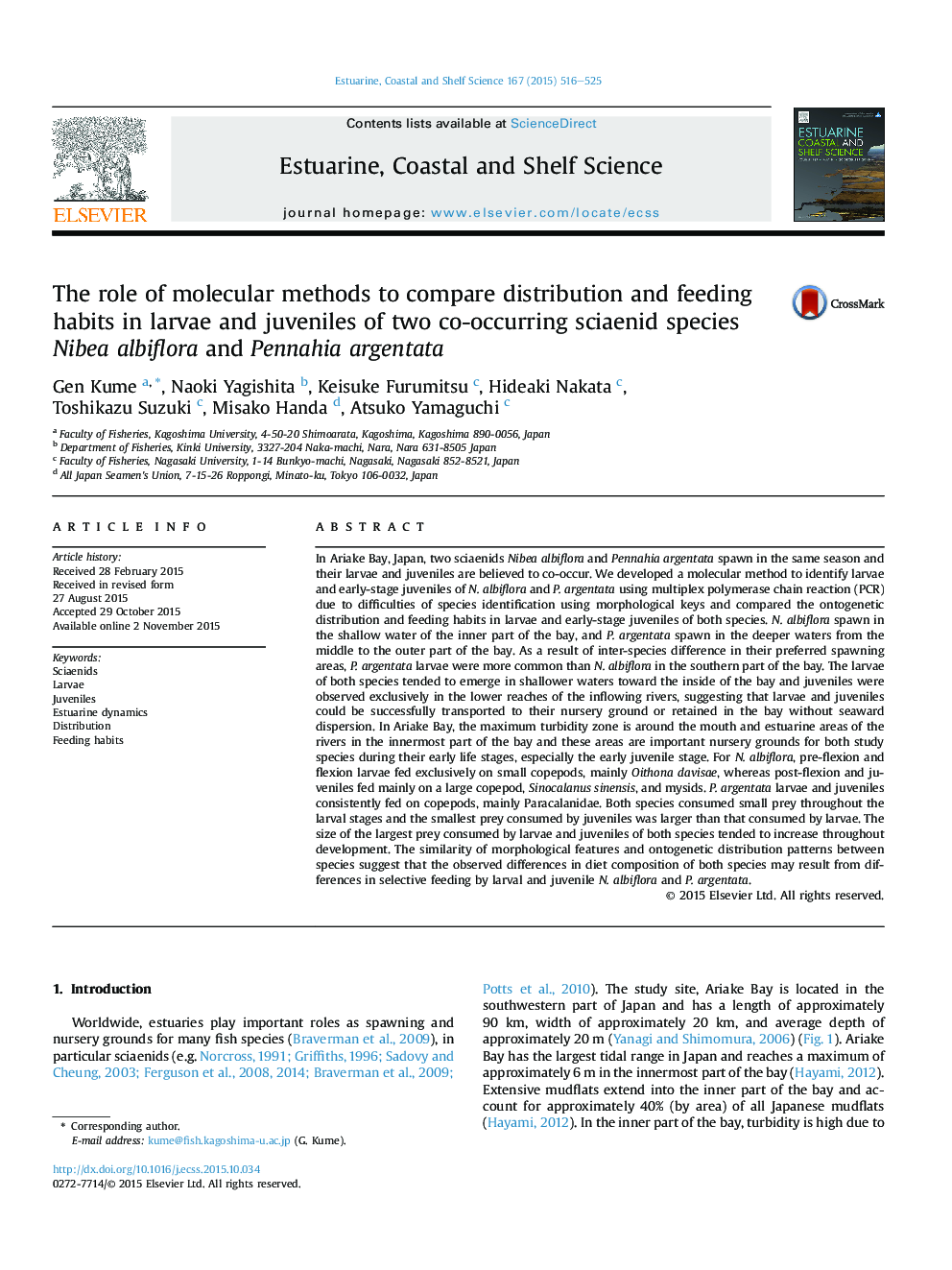| کد مقاله | کد نشریه | سال انتشار | مقاله انگلیسی | نسخه تمام متن |
|---|---|---|---|---|
| 4539351 | 1326591 | 2015 | 10 صفحه PDF | دانلود رایگان |

• We developed a molecular method for identifying larval and juvenile Nibea albiflora and Pennahia argentata.
• We compared the ontogenetic distribution and feeding habits of both species in Ariake Bay, Japan
• Juveniles of both species were observed exclusively in the lower reaches of the inflowing rivers.
• Both species fed preferentially on copepods throughout early development.
• The species composition of the diet differed between N. albiflora and P. argentata.
In Ariake Bay, Japan, two sciaenids Nibea albiflora and Pennahia argentata spawn in the same season and their larvae and juveniles are believed to co-occur. We developed a molecular method to identify larvae and early-stage juveniles of N. albiflora and P. argentata using multiplex polymerase chain reaction (PCR) due to difficulties of species identification using morphological keys and compared the ontogenetic distribution and feeding habits in larvae and early-stage juveniles of both species. N. albiflora spawn in the shallow water of the inner part of the bay, and P. argentata spawn in the deeper waters from the middle to the outer part of the bay. As a result of inter-species difference in their preferred spawning areas, P. argentata larvae were more common than N. albiflora in the southern part of the bay. The larvae of both species tended to emerge in shallower waters toward the inside of the bay and juveniles were observed exclusively in the lower reaches of the inflowing rivers, suggesting that larvae and juveniles could be successfully transported to their nursery ground or retained in the bay without seaward dispersion. In Ariake Bay, the maximum turbidity zone is around the mouth and estuarine areas of the rivers in the innermost part of the bay and these areas are important nursery grounds for both study species during their early life stages, especially the early juvenile stage. For N. albiflora, pre-flexion and flexion larvae fed exclusively on small copepods, mainly Oithona davisae, whereas post-flexion and juveniles fed mainly on a large copepod, Sinocalanus sinensis, and mysids. P. argentata larvae and juveniles consistently fed on copepods, mainly Paracalanidae. Both species consumed small prey throughout the larval stages and the smallest prey consumed by juveniles was larger than that consumed by larvae. The size of the largest prey consumed by larvae and juveniles of both species tended to increase throughout development. The similarity of morphological features and ontogenetic distribution patterns between species suggest that the observed differences in diet composition of both species may result from differences in selective feeding by larval and juvenile N. albiflora and P. argentata.
Figure optionsDownload high-quality image (361 K)Download as PowerPoint slide
Journal: Estuarine, Coastal and Shelf Science - Volume 167, Part B, 20 December 2015, Pages 516–525